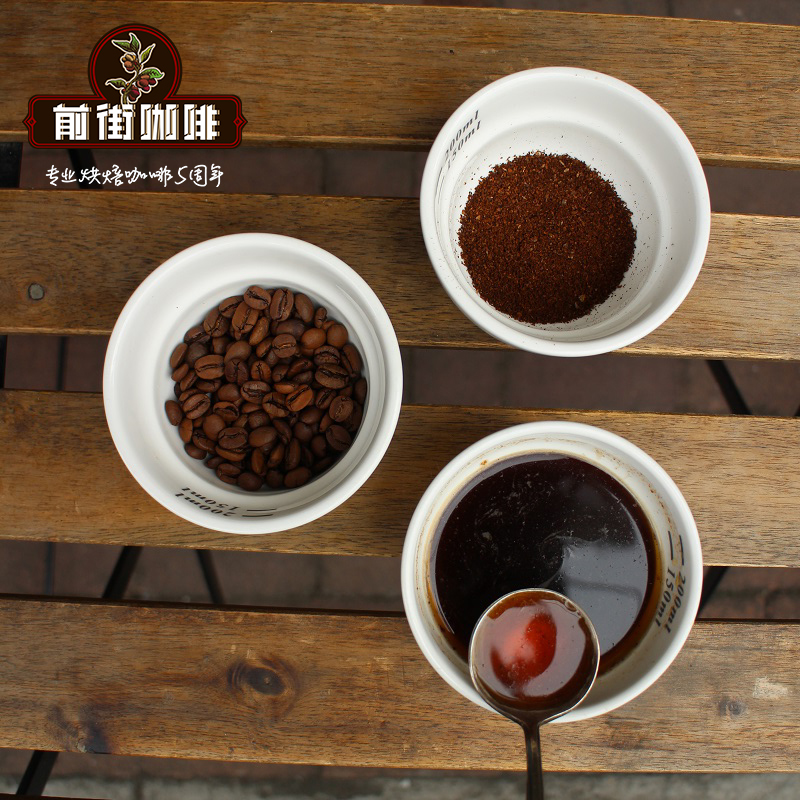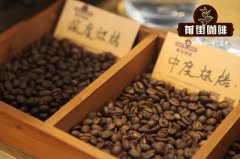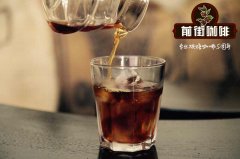History of G1 coffee beans cultivation in Toraja, Sulawesi, Indonesia? Coffee beans before.

Professional coffee knowledge exchange more coffee bean information please follow the coffee workshop (Wechat official account cafe_style)
The planting history of G1 coffee beans in Sulawesi Toraja, Indonesia? [Sulawesi] do you recommend hand data for coffee beans in the front street?
Sulawesi Sulawesi, formerly known as Celebes, is an island in Indonesia. Sulawesi is also the 11th largest island in the world. Geographically, Sulawesi is surrounded by the archipelago, Borneo to the west, Mindanao in the Philippines to the north, Moluccas to the east, Florice and Timor to the south, and many of these islands produce coffee.
Indonesia's major islands produce a lot of well-known and excellent coffee, namely, Manning in Sumatra, the state-owned arabica estate in Java, and Toraja in Sulawesi (also known as Kalosi, Kalosi).
Sulawesi has been known as Celebes for centuries; like Java and Sumatra, Sulawesi belongs to volcanic terrain, and there are still ten active volcanoes in the area. In 1750 the Dutch began to grow coffee on the island. It is exported by Ujung Panfang Port (or Makasar Port) in the southwest of the island. Some of the most famous coffees in Sulawesi now come from the Toraja Mountains in the center of the island, where the Toraja live; this time they are high-quality semi-washed beans from the Toraj Mountains. Kalosi is her distribution center, so if you mark Sulawesi Sulawesi Toraja or Sulawesi Carrosi or Selbis-Carosi, you are talking about the high-altitude Sulawesi beans in this area, and only the local buyers and collectors know exactly which small village produces the high-altitude beans.
Toraja's coffee is famous for its name Celebes Kalossi (Selbis-Calossi); Kalosi is the name of the Dutch colonial era; because coffee is grown in more remote areas, it is impossible for coffee farmers to send it to traders themselves! So coffee farmers sell their coffee to middlemen and then resell it to exporters, and Rantepao is the central market for Toraja coffee.
This batch of Karosi is a high-altitude mountain tribe born at 1500 meters. In fact, this tribe already has the conditions of a small cooperative. The reason is that 1) they are all clan relatives. 2) they find their own buyers to cooperate for a long time. 3) Tribal farmers adopt cooperative planting and concentrated first-half washing treatment, and will screen ripe cherry fruits for semi-washing treatment, so the purchase price is higher than that of retail investors in this area. Their purchaser is a local who knows a little English. Because she can speak English, I guess she is a mixed race. I don't know if her ancestors were Portuguese. Several mail letters all mentioned that they would take me to this small producing area to visit this tribe. Unfortunately, they didn't match each other's time and harvest season.
Sulawesi has been known as the Celebes of Salbis for centuries. Like Java and Sumatra, Sulawesi belongs to volcanic topography, and there are still ten active volcanoes in the area.
In 1750 the Dutch began to grow coffee on the island. Exported by Ujung Panfang port.
Now some of Sulawesi's most famous coffee comes from Torajaland in the center of the island, which is home to Toraja; this time it's Torajaland's beans.
Toraja's coffee is famous for its name Celebes Kalossi (Selbis-Calossi); Kalosi is the name of the Dutch colonial era; because coffee is grown in more remote areas, it is impossible for coffee farmers to send it to traders themselves! So coffee farmers sell their coffee to middlemen and then resell it to exporters, and Rantepao is the main market for Toraja coffee.
The following is the basic information about Toraja Coffee:
Country name: Indonesia; producing area: Torajaland variety: Sumatra
Treatment: semi-washed (semi-wash)
Grade: Grade 1
Cup test data:
Dry aroma: obvious walnut, sweet, soft herbal aroma
Wet fragrance: caramel nut, almond flavor, corn sweet
Sipping: longan honey sweet and citrus grease flavor, body is very rich silk, acidity is like citrus bitter fat, with caramel
Sweet, greasy, rich and complex taste, deep enough
Qianjie cuisine is recommended:
Filter cup: V60
Gouache ratio: 1:15
Degree of grinding: small Fuji 3.5
Water temperature: 91 ℃
Brewing and cooking techniques:
Steam with 30g water for 30s, slowly inject small water to 120g for segmentation, then slightly increase the water flow to 225g.
Total duration: 2 hours, 39 years, 15 ".
Sweetness: ☆☆
Acidity: ☆☆
Bitterness: ☆
Alcohol thickness: ☆☆
Yu Yun: ☆☆
Other suggestions for trickling extraction:
Normal pressure, recommended grinding degree of 3.5-4 / water temperature 90 °C
Philharmonic pressure, recommended 2.5 grinding degree, water temperature 88 °C
Important Notice :
前街咖啡 FrontStreet Coffee has moved to new addredd:
FrontStreet Coffee Address: 315,Donghua East Road,GuangZhou
Tel:020 38364473
- Prev

Delicious coffee beans | Hawaiian Kona coffee flavor characteristics _ Hawaiian kona coffee price
Professional coffee knowledge exchange more coffee bean information please follow the coffee workshop (Wechat official account cafe_style) about Hawaii Kona Coffee-Kona, coffee drinkers have heard of his acidic and acid-rich characteristics, but after actually staying in Hawaii for a period of time, I found that the term Kona can only represent the quality and taste of coffee beans produced in the state of Hawaii
- Next

Why is Hawaiian Kona coffee expensive? how's Hawaiian kona Coffee? is it good?
Professional coffee knowledge exchange more coffee bean information please follow the coffee workshop (Wechat official account cafe_style) Hawaii Kona Coffee, as a world-famous coffee bean brand, although it is not the most expensive coffee in the world, it has always been among the best in the category, so why is 100% Kona coffee very expensive? To sum up, one of the most important factors is expensive labor.
Related
- Detailed explanation of Jadeite planting Land in Panamanian Jadeite Manor introduction to the grading system of Jadeite competitive bidding, Red bid, Green bid and Rose Summer
- Story of Coffee planting in Brenka region of Costa Rica Stonehenge Manor anaerobic heavy honey treatment of flavor mouth
- What's on the barrel of Blue Mountain Coffee beans?
- Can American coffee also pull flowers? How to use hot American style to pull out a good-looking pattern?
- Can you make a cold extract with coffee beans? What is the right proportion for cold-extracted coffee formula?
- Indonesian PWN Gold Mandrine Coffee Origin Features Flavor How to Chong? Mandolin coffee is American.
- A brief introduction to the flavor characteristics of Brazilian yellow bourbon coffee beans
- What is the effect of different water quality on the flavor of cold-extracted coffee? What kind of water is best for brewing coffee?
- Why do you think of Rose Summer whenever you mention Panamanian coffee?
- Introduction to the characteristics of authentic blue mountain coffee bean producing areas? What is the CIB Coffee Authority in Jamaica?

